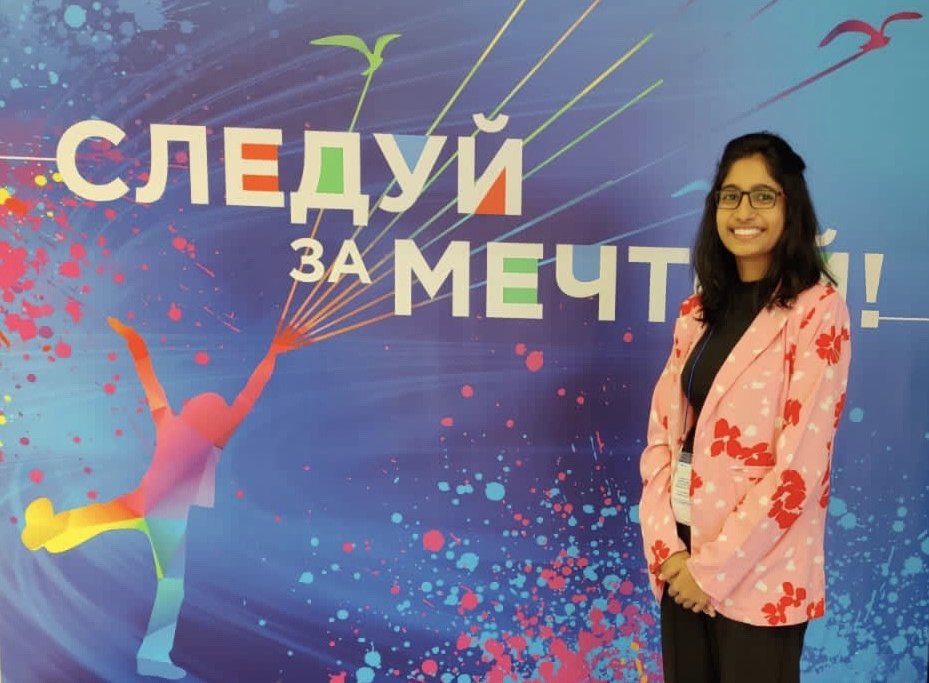RUDN medical student from India won the competition of term papers with a study of the features of the diagnosis of liver disease

“Science is everything to me. I love the wide range of problems that need to be solved to understand how life works. That's what makes it easier - the deeper we look at a topic, the better we understand how to deal with a situation. Great, promising work, including research into the early diagnosis of non-alcoholic fatty liver disease, is important to medicine. It helps us start treatment as soon as possible and save patients,” - Lahana Ravoori Priyamsha, a 6th year medical student at the Medical Institute.
From the Priyamsha study
Non-alcoholic steatohepatitis occurs in 20-30% of the Russian population. It is difficult to diagnose because most patients are asymptomatic. At risk are patients with obesity, diabetes mellitus and arterial hypertension. Obesity is the most common factor in the development of the disease. Patients with diabetes mellitus are at higher risk than patients with arterial hypertension, and they will primarily become susceptible to elevated blood levels of the enzymes aspartate aminotransferase (AST) and alanine aminotransferase (ALT). If a patient is at risk, even with normal blood chemistry results they may have non-alcoholic steatohepatitis. Further evaluation is necessary.
Several tests are performed for early and accurate diagnosis. Two key ones are transient elastography with a controlled attenuation parameter (FibroScan machine) and MRI/biopsy. The student found that the first method can be used effectively at the stage of significant fibrosis but may erroneously indicate a more severe stage. The reason is that the FibroScan machine is less sensitive and calculates the level of disease non-invasively, based on the elasticity of the liver.
And the second method, MRI/biopsy, is more effective in diagnosing severe fibrosis, as patients with elevated liver enzymes have high levels of inflammatory markers and symptoms. However, FibroScan is better suited for initial screening of non-alcoholic steatohepatitis, it is faster and cheaper. In other cases, MRI/biopsy should be used.
Supervisor: Olga Tarasova, Candidate of Medical Sciences, Associate Professor at the Department of Hospital Therapy of the Medical Institute, Director of the Centre for Liver Research at RUDN.
For reference
The first places were taken by students from the Institute of Foreign Economic Security and Customs Affairs, the Higher School of Management, the Faculty of Economics, the Institute of Law, the Institute of Foreign Languages, the Faculty of Philology, the Faculty of Humanities and Social Sciences, the Institute of Biochemical Technology and Nanotechnology and the Medical Institute.
In the competition "On the pages of the term paper". 25 works were marked, 16 of them received the highest mark.
RUDN University summed up the results of the competition among scientific student societies and scientific circles. The GreenLab of the Institute of Ecology became the best Student Research Society, the second place was taken by the Institute of Foreign Languages, and the third place - the Faculty of Humanities and Social Sciences.
There are approximately 1,600,000 children in Russia with confirmed attention deficit hyperactivity disorder. The necessary therapy is not always available to their families due to cost or the lack of specialized centers nearby. Teachers and students at RUDN University and Altai State University have developed a special app for these children that increases attention and reduces anxiety using the color photostimulation method.
Student science and popularization tour club has been operating at the Institute of Environmental Engineering for five years now. It was established under the auspices of the GreenLab Student Scientific Society.
RUDN University summed up the results of the competition among scientific student societies and scientific circles. The GreenLab of the Institute of Ecology became the best Student Research Society, the second place was taken by the Institute of Foreign Languages, and the third place - the Faculty of Humanities and Social Sciences.
There are approximately 1,600,000 children in Russia with confirmed attention deficit hyperactivity disorder. The necessary therapy is not always available to their families due to cost or the lack of specialized centers nearby. Teachers and students at RUDN University and Altai State University have developed a special app for these children that increases attention and reduces anxiety using the color photostimulation method.
Student science and popularization tour club has been operating at the Institute of Environmental Engineering for five years now. It was established under the auspices of the GreenLab Student Scientific Society.